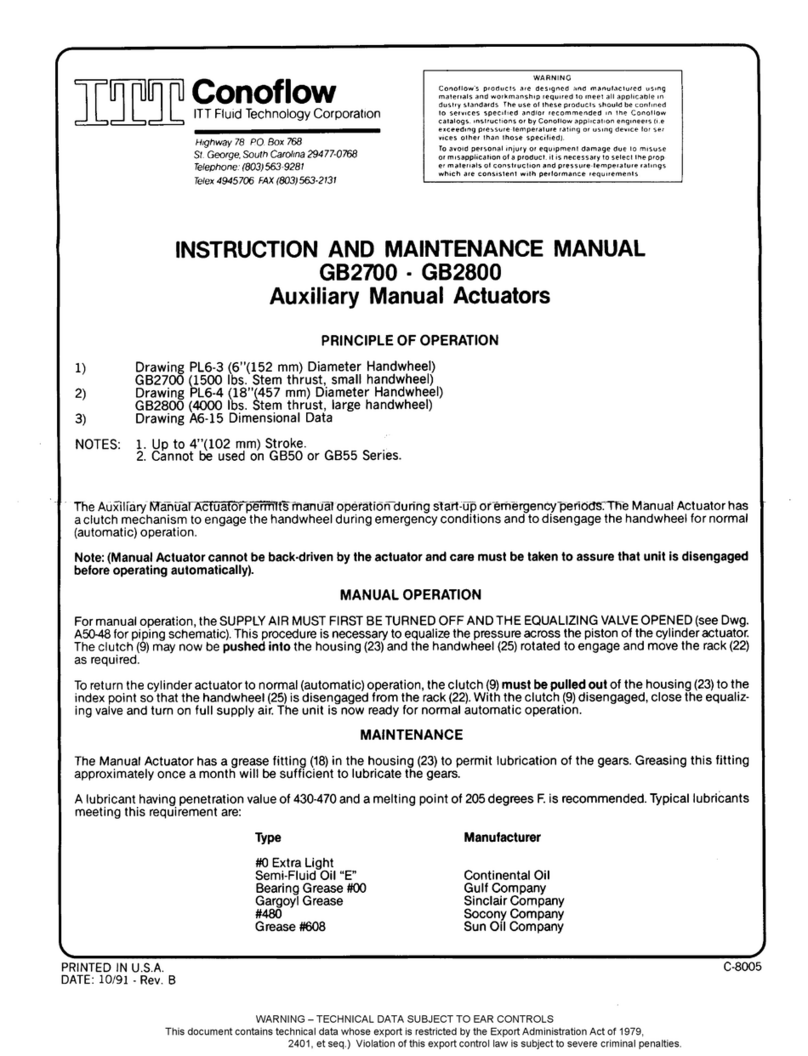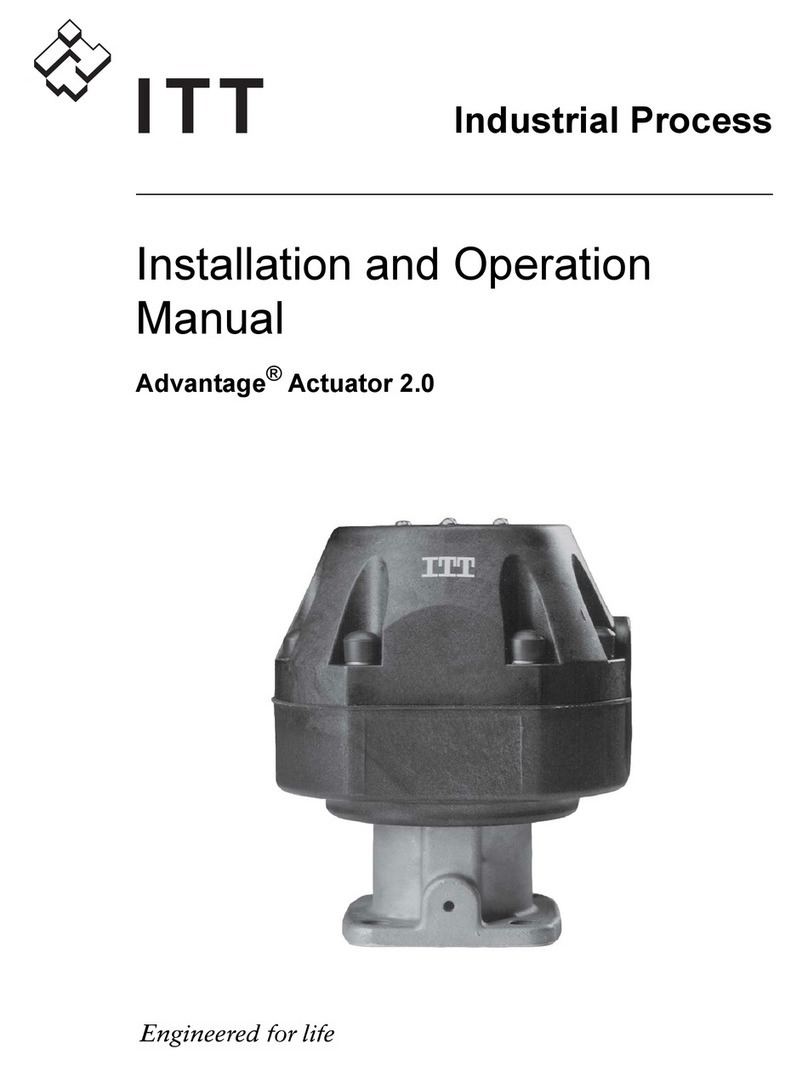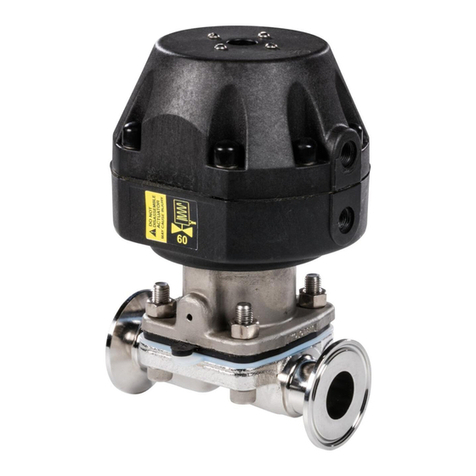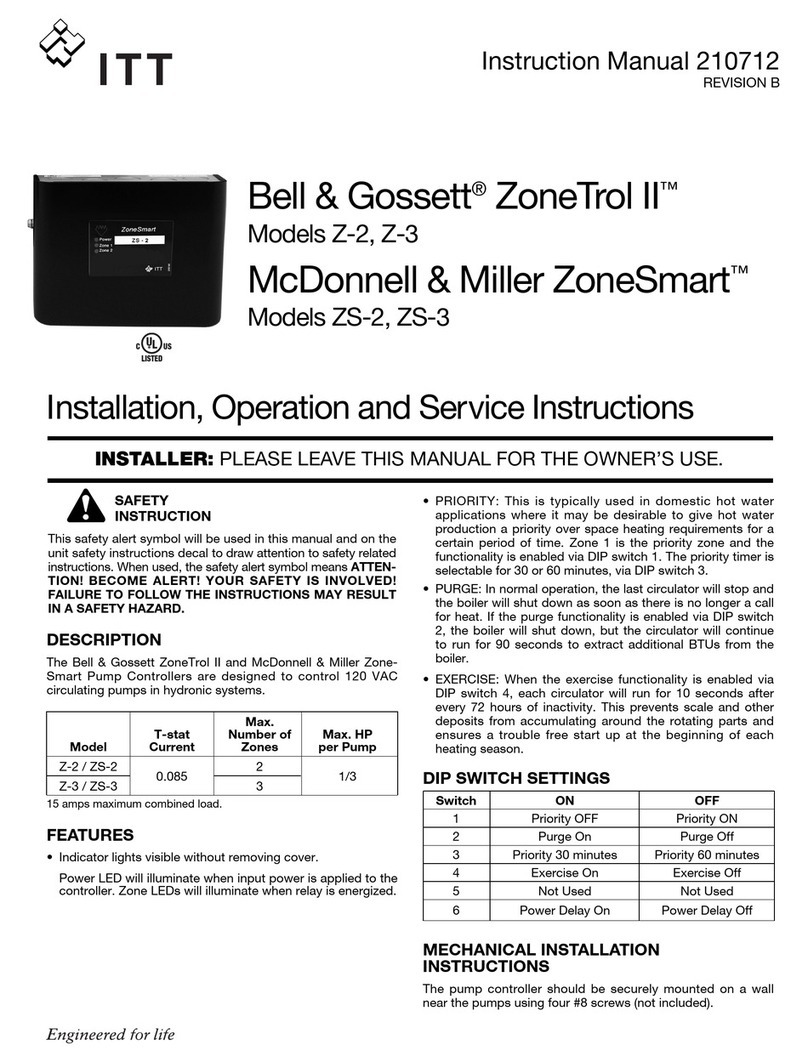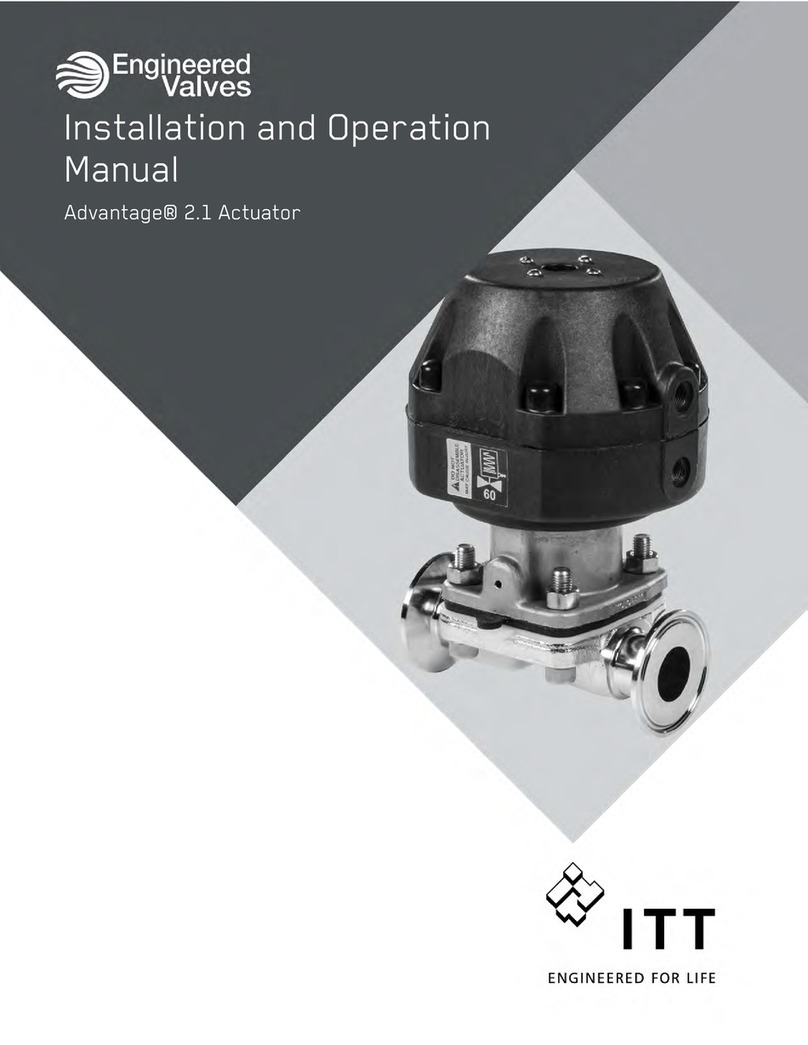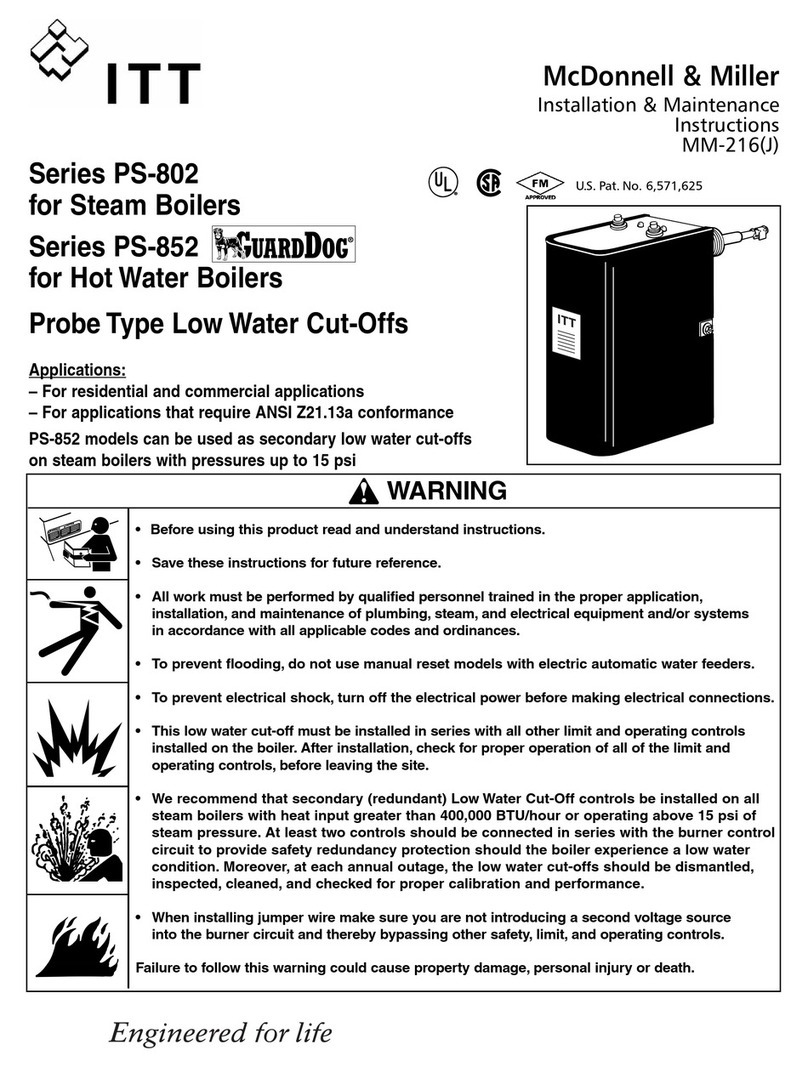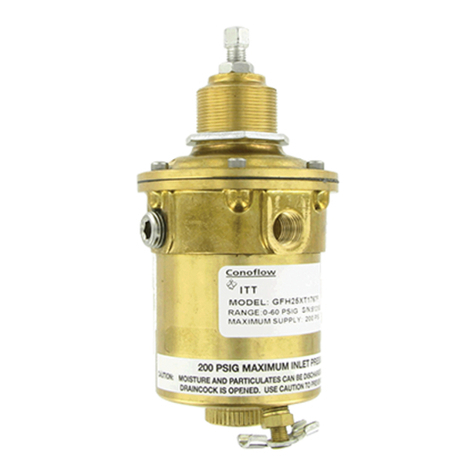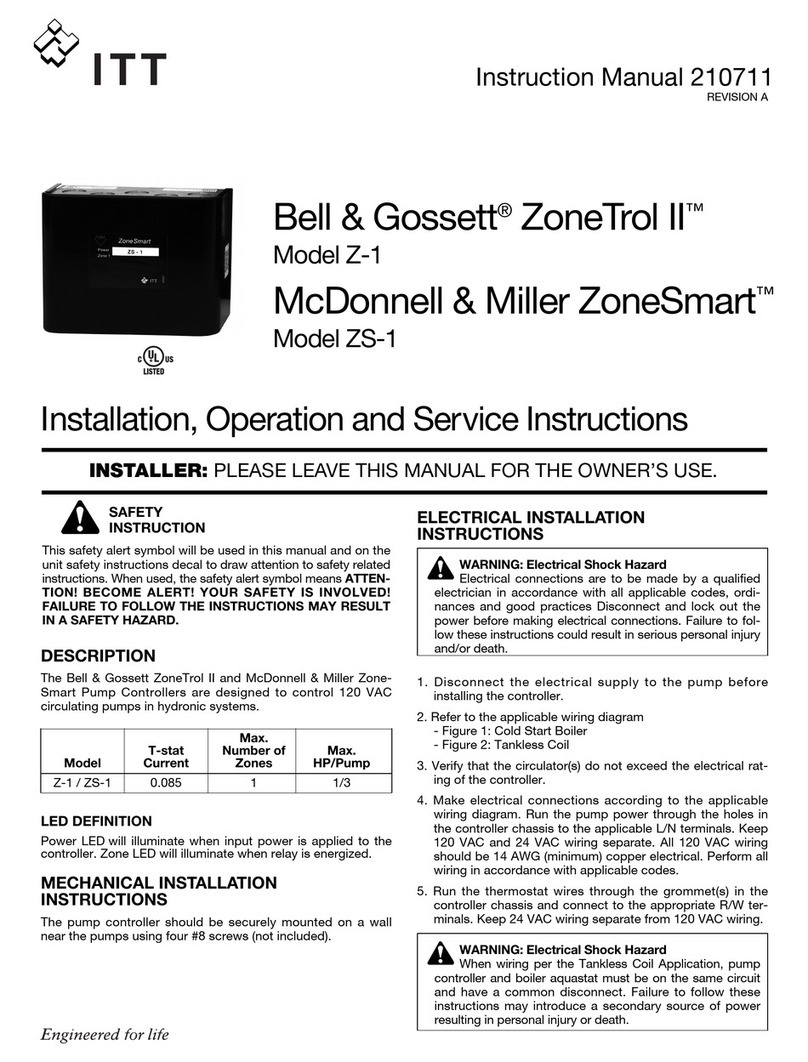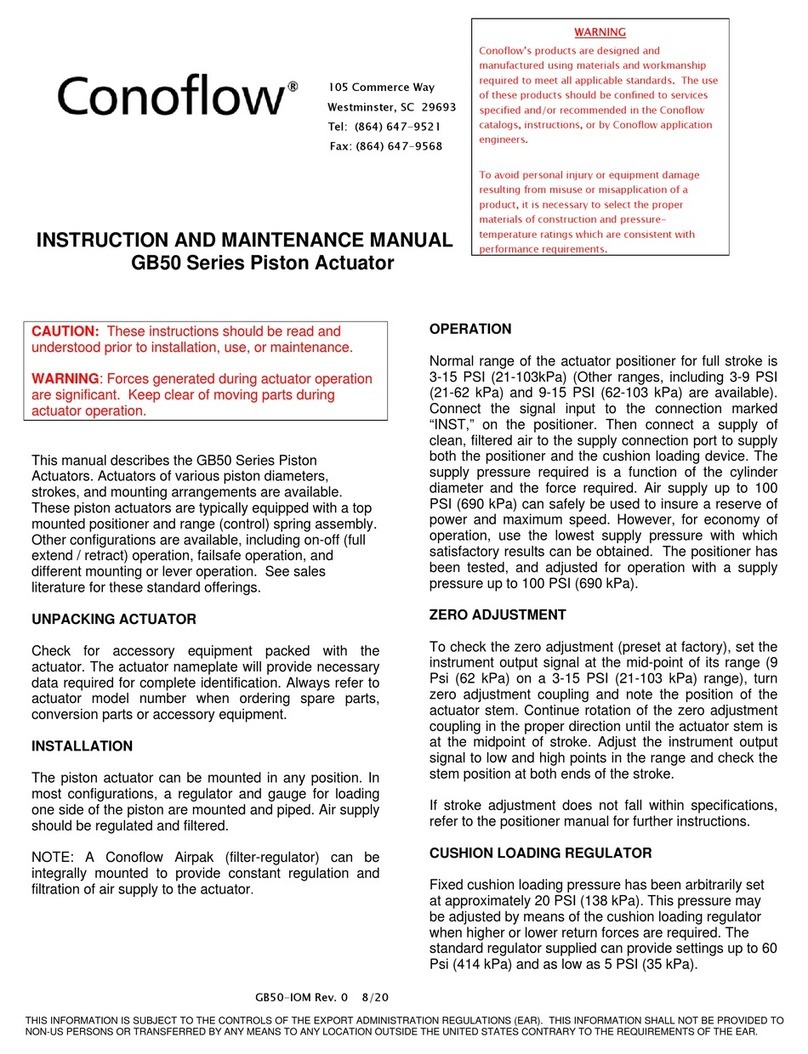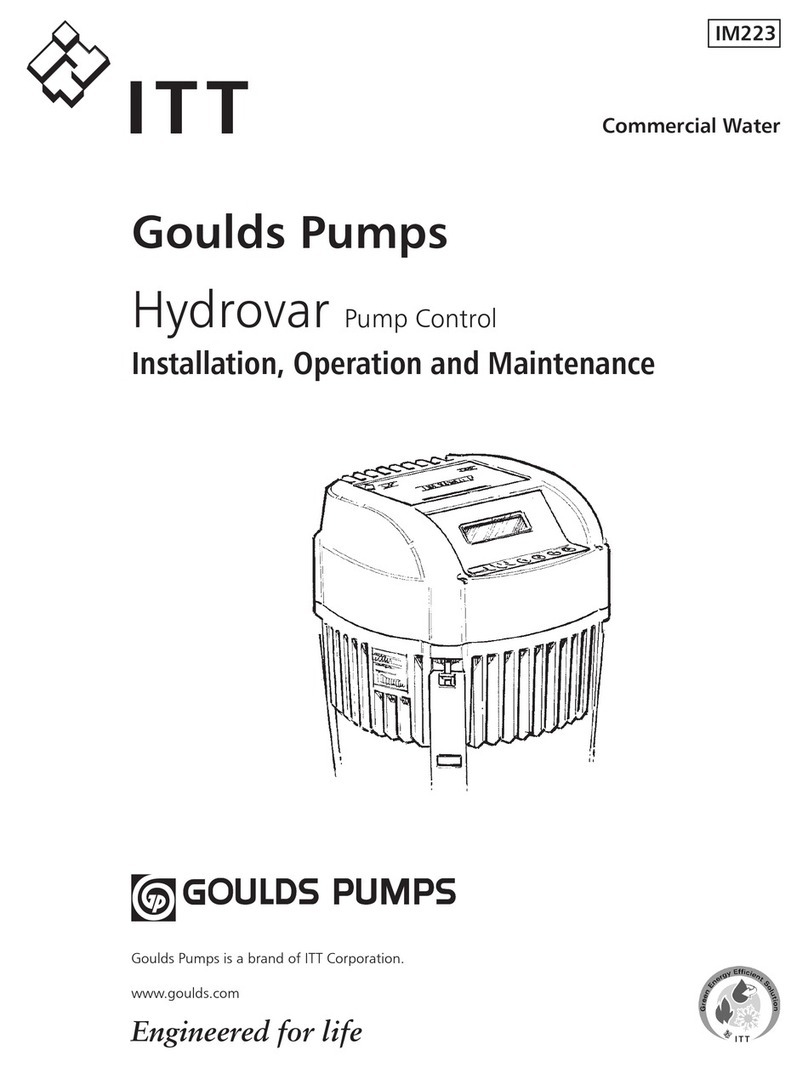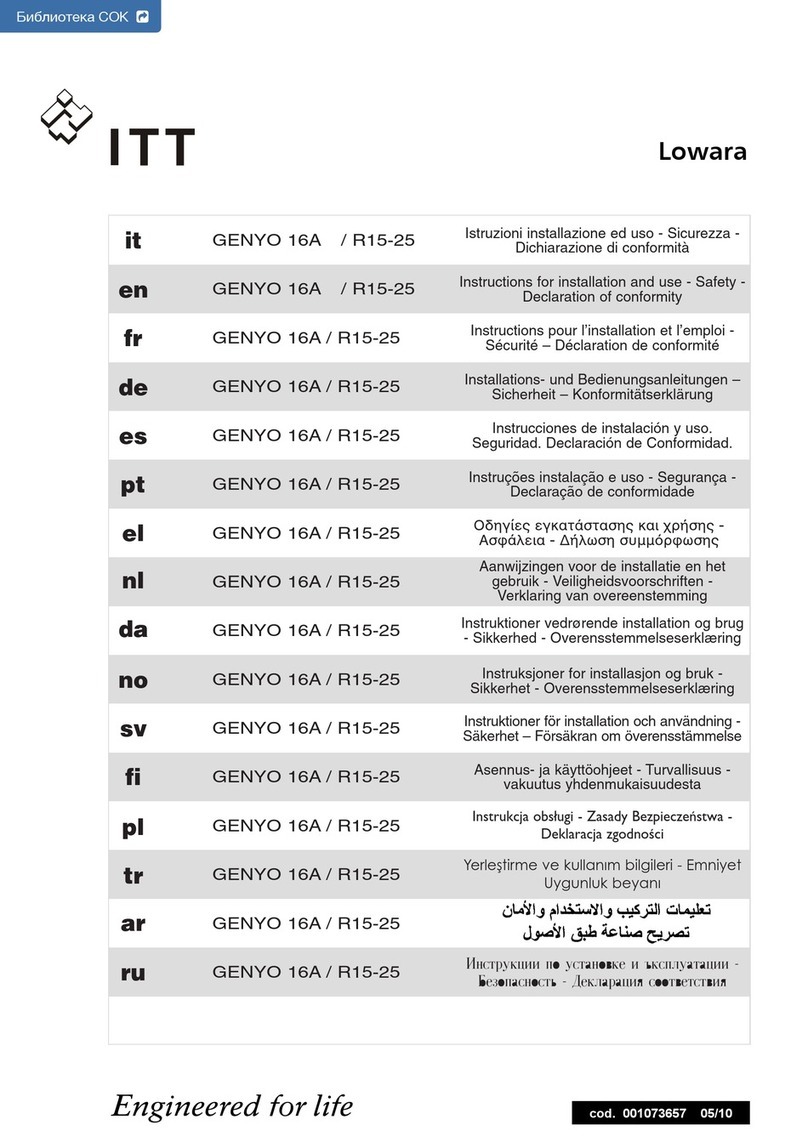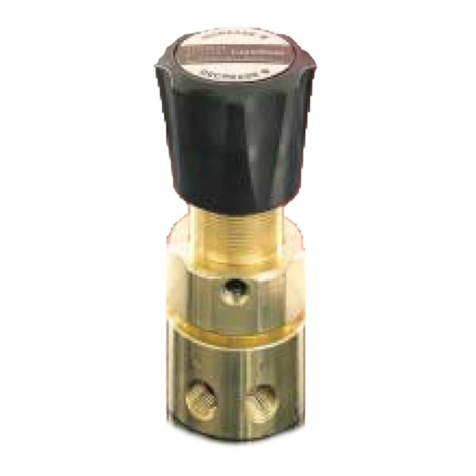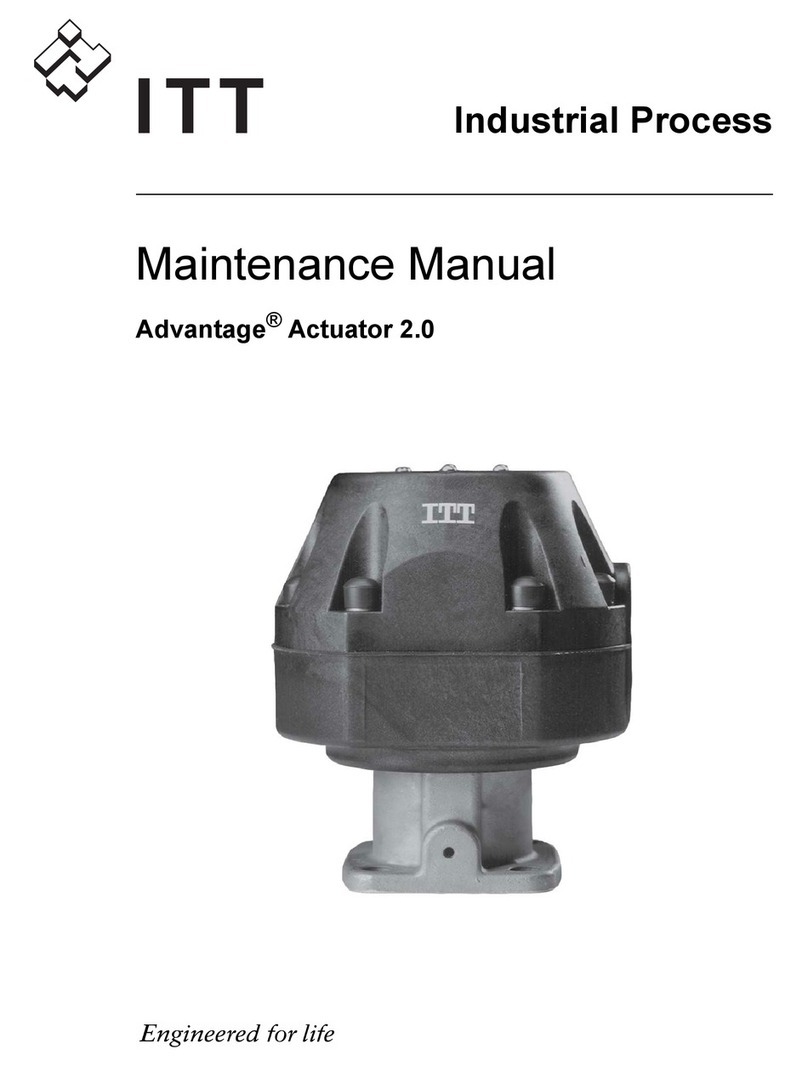
Page 3 of 6 GFH45-IOM Rev. 0 12/18 Printed in USA
CONTROL ENGINEERING DATA
Control Engineering Data is intended to provide a single
source from which one can determine, in detail, the full
scope of the product line. In addition to materials of
construction, diaphragm selection, filtering capabilities, it
also provides all necessary data for the mounting
options and control output setting ranges. Control
Engineering Data also provides a means of
communicating, by way of an 12 digit model number, a
full description of the product selection.
Characters 1-5: (Filter Regulator Model No.)
GFH45
Character 6: Filter Options
A = Cellulose (10 micron) – optional
B = Stainless Steel (40) micron-cleaned for
oxygen service) – optional
C = Stainless Steel (40 micron) – optional
X = Polypropylene (35 micron) – standard
Character 7: Bonnet Options
F= Front mount - optional
T= Threaded Bonnet - standard
Character 8: Adjustment Options
H= Handwheel - optional
K = Knob (Wrench Style) – standard
P = Preset (Factory Output Setting CAN be field
adjusted) – optional
C = Tamperproof (Factory Output Setting
Cannot be field adjusted)- optional
NOTE: 1. Customer must specify OUTPUT
SETTING, SUPPLY PRESSURE, and
FLOW.
Character 9: Diaphragm Selection
E= Buna “N” (w/Relief, No Bleed) – Standard
F= Viton on Nomex (No Bleed, No Relief)
J= Viton on Nomex (w/Relief, No Bleed)
M= Buna “N” (No Bleed, No Relief)
Character 10: Gauge Selections
X= No Gauge – standard
Character 11: Filter Bowl Option
1= Standard (Bowl Size)
NOTE: Materials of construction and cleaning specifications
are the user’s responsibility.
Character 12: Control Ranges
C= 25 psig (172 kPa)
F= 60 psig (414 kPa)
G= 125 psig (862 kPa)
OPERATION IN SERVICE
Open upstream controls to provide the regulator supply
pressure. To increase the output set pressure, rotate the
knob or handwheel clockwise. To decrease the output set
pressure, rotate the knob or handwheel counterclockwise.
For non-relieving models (option “M” or “F” in character 9
position of the CED code), rotate the knob or handwheel
counterclockwise to reduce the output pressure when the
system is flowing.
When the system is being shut down, it is an established
safety practice to reduce the output pressure under flow then
shut off the supply pressure to the regulator. After all
pressure is relieved from the system, back out the control
knob until there is no spring resistance felt on the control
knob. This will assure that no output pressure will be
generated when the supply pressure to the regulator
resumes, the next time the system is used.
NOTE: The downstream pressure will change as the flow
changes. As the flow increases, the delivery pressure will
decrease.
NOTE: The outlet set pressure will change as the inlet
pressure changes. The output set pressure will increase as
the supply pressure decreases at an approximate rate of 0.3
psi per 25 psi decrease in the inlet pressure.
